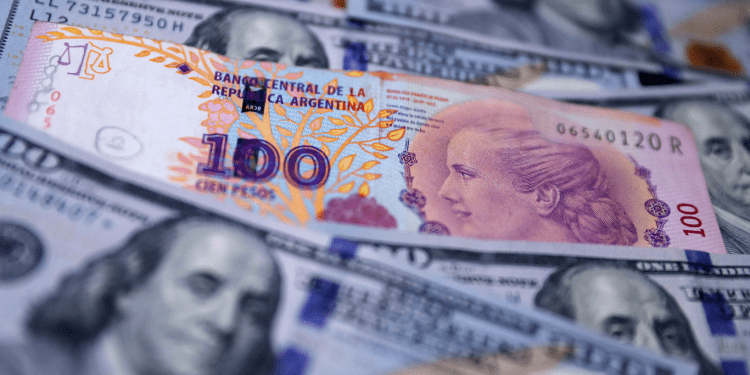- Juan Agustín D’Attellis Noguera, a director at Argentina’s central bank, supports the idea of a digital peso to boost the national economy.
- The main advantage of a digital peso is its traceability, potentially increasing the government’s tax base.
- The proposed digital peso aims to coexist with cash, eventually phasing out paper currency.
In a recent television interview, Juan Agustín D’Attellis Noguera, a top official from Argentina’s central bank, threw his weight behind the Minister of Economy Sergio Massa’s idea of introducing a central bank digital currency (CBDC) to revitalize the national economy. Noguera is optimistic that introducing a “digital peso” could be a significant step towards economic stability for Argentina, possibly by 2024.
Noguera highlighted the primary advantage of the digital peso: its traceability. While specific transaction participants might remain anonymous, the fact that a transaction took place would be undeniable. This feature, he argued, could broaden the government’s tax base.
Another significant benefit of the digital peso, as Noguera noted, is its potential to address Argentina’s currency issues. Presently, the fluctuating Argentine peso frequently finds itself in competition with the U.S. dollar, even for regular transactions. With a stable digital currency in place, such challenges could diminish.
The central bank official emphasized a phased approach to the digital peso’s introduction. Initially, it will operate alongside traditional cash, with an eventual goal of completely replacing physical currency, marking the project’s ultimate phase.
The idea of a CBDC gained traction on October 2 when Sergio Massa, who is also running for the presidency, promised its launch as a potential solution to Argentina’s persistent inflation issues. Current election polls show Massa slightly behind in the race, trailing Javier Milei. Milei is a staunch supporter of Bitcoin and opposes the idea of a central bank. He has even proposed adopting the U.S. dollar as Argentina’s official currency.
With various financial proposals on the table and an upcoming election, Argentina stands at an economic crossroads. The direction it takes could reshape its financial future and potentially provide a blueprint for other nations grappling with similar monetary challenges.
CBDCs Challenge Bitcoin’s Core Values
The enthusiasm surrounding Argentina’s potential introduction of a central bank digital currency (CBDC) underscores a pressing debate in the world of finance: Can CBDCs ever emulate the intrinsic benefits of decentralized cryptocurrencies like Bitcoin?
While the digital peso seeks to remedy Argentina’s economic challenges, especially inflation, its very nature could pose concerns. Unlike Bitcoin, which thrives on decentralization and is immune to governmental or institutional control, CBDCs remain under the purview of national banks and governments.
This centralized control is antithetical to the principles that have made Bitcoin a magnet for investors. People flock to Bitcoin because it promises autonomy, free from the unpredictable policies or potential mismanagement of central entities. Introducing a CBDC might seem like a modern solution, but it risks merely digitizing the same issues that plague traditional fiat currencies, while also sidelining the core advantages of true cryptocurrencies.
For countries like Argentina, the balance between adopting new financial tools and preserving the spirit of decentralized finance poses a complex challenge. As we move forward, discerning this difference between digital and decentralized becomes crucial.














